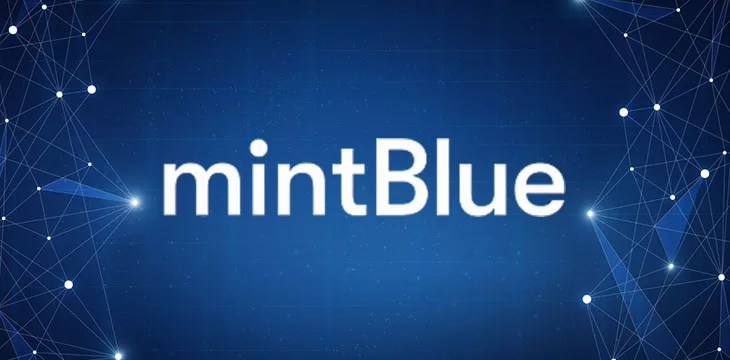|
Getting your Trinity Audio player ready...
|
Blockchain’s potential will only be realized when we understand the need for a single, global ledger of truth. Enterprise-focused firm mintBlue says blockchain “revolutionizes accounting” with its peer-to-peer, trusted bookkeeping layer, but we must start thinking of it as a “protocol” rather than just a “technology.” Its power lies in its ability to connect multiple different entities to one network, not attempting to build new or private blockchain networks for various purposes.
mintBlue published a blog post saying blockchain is “more complex than people think,” adding that those pushing for wider adoption have been in technology’s “Trough of Disillusionment” for years. Instead of adoption, we’ve seen ever-more incompatible blockchain networks developed and pilot tests that all failed because they were too narrow/small a scale (usually within a company) to be useful.
Adding to blockchain’s tendency to disappoint were the use of “so-called layer two solutions” to combat scaling, speed, and cost issues, and “private blockchains” that essentially function as databases and defeat blockchain’s purpose.
mintBlue CEO Niels van den Bergh said:
“The end game of blockchain in the accounting sector is the possibility of a so-called ‘triple-entry’ bookkeeping system, where every credit and debit transaction between multiple companies is interconnected, enabling seamless bookkeeping that can save companies significant overhead in the administrative workforce.”
It’s necessary to have a blockchain that actually functions well at the task of being a single, global ledger to achieve these goals. The Bitcoin protocol, released to the public in January 2009, had everything required to do this. It was fast, cheap, and scalable. However, the years that followed its release saw attention shift to speculative trading on its native token and attempts to cripple its scalability in pursuit of “decentralization“—which led to higher costs and limited usefulness as BTC.
BTC’s self-imposed limitations led developers to break away and attempt to create better blockchain networks, most of which have run into their own problems by doing too much in the wrong places (e.g., Ethereum attempting to perform on-chain computation) or by re-inventing the wheel with technological variations that don’t perform well under pressure. We’ve seen fancy new hybrid consensus mechanisms, the emergence of the “proof of stake” fad, and networks requiring constant reboots to sort out kinks (e.g., Solana).
BSV, which is today the only blockchain network carrying the “Bitcoin” name that still follows Bitcoin’s original protocol rules, proves that Bitcoin was the world’s accounting solution all along, with the ability to scale unboundedly to process the entire world’s data without raising usage costs.
Recently, mintBlue has shown what Bitcoin and blockchain can do by bringing together several partners with digital standards. These include Swedish accounting software firm VISMA|yuki, the Dutch Chamber of Commerce, and Qualified Trust Service Providers (QTSP) in other countries.
Their own trial has “led to the decoupling of data and software.” VISMA|yuki users can elect to store their business data on BSV’s public blockchain while retaining 100% ownership and control of that data. Invoice information is added to the BSV ledger with standards like XML and Universal Business Language (UBL) that any traditional invoice processor can process. It also follows the European Union’s Data Act and FAIR data principles of Findability; Accessibility; Interoperability; and Reusability.
Another important aspect is establishing Bitcoin’s digital signatures as something connected to legal identities. This not only cements data ownership and enables access controls, but can also reduce financial fraud by connecting data to real-world individuals and entities. All data processed on the BSV blockchain can remain there permanently, leaving a tamper-proof audit trail that internal and external investigators can examine.
mintBlue develops the SDKs that allow any business or other entity to encrypt, decrypt, and filter information on the client side. Though the BSV blockchain itself is public and open to anyone to use, information stored on it can remain private and verifiable by controlling access with master and sub-keys.
Using a single, trusted ledger based on a rock-solid protocol is the correct way to demonstrate blockchain’s usefulness to the business and accounting world. It’s necessary to promote education about blockchain and its best-uses for everyone to understand this—in time, this will lead to wider blockchain adoption, less time and money wasted on siloed trial programs, and (hopefully) less hype about digital asset values and speculation.
Contrary to what some claim, it’s no more possible to have multiple competing blockchains than to suggest multiple competing internets. The latter proposal would sound foolish in 2023, though it didn’t stop companies from trying this in the mid-1990s. In time, the importance of one set of protocol rules that can process data of multiple different standards will emerge.
Watch: Pieter Den Dooven explains how they are solving real world problems with mintBlue

 12-19-2025
12-19-2025 




